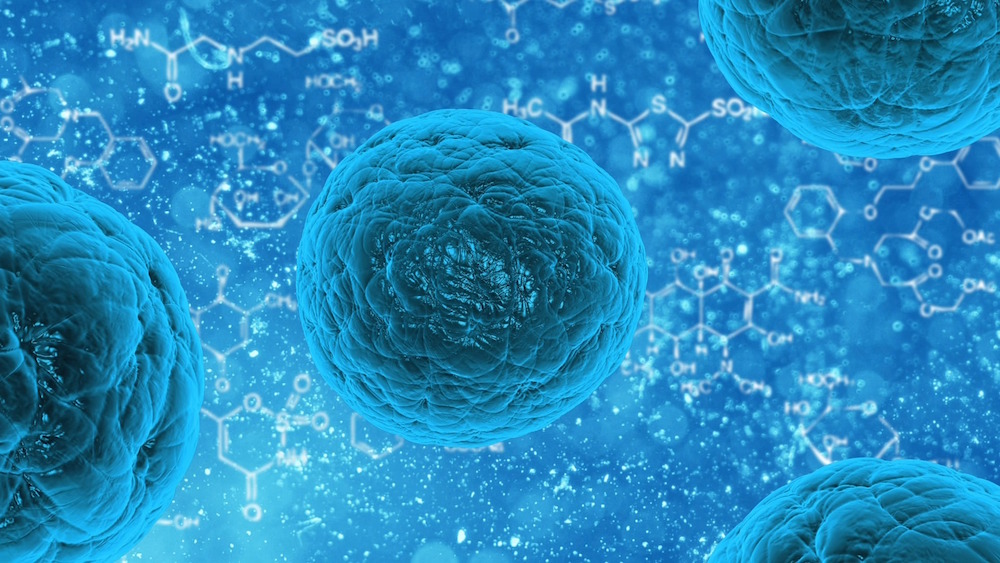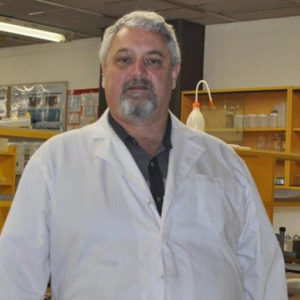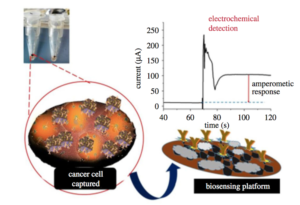
Griffith University researchers, in collaboration with the University of Queensland, have identified magnetic nanoparticles, nanozymes, which could help in the detection of cancer.
Published this week in the researchers discovered the gold-loaded iron oxide nanozymes enhance the signal for cancer detection in breast cells by six-fold.

There are biomarkers or receptors expressed on the surface of healthy or cancer cells,” explained from the .
“Cancer cells over-express these biomarkers on the surface of the cell.”
The goal is to measure this over-expression as accurately as possible by matching the biomarker lock with the right key.
The biosensing platform that the researcher developed is an array of keys that releases a signal when they come together with the biomarker locks on the cell.
“We quantify the electrical current produced from the chemical reactions when the biosensor platform recognises the markers on the cell surface,” Dr Cock said.
In this study the researchers assessed ways of modifying this interaction to increase the signal output in breast cancer cells, but not in unaffected ovarian cells.
“The signal output was enhanced by first binding nanomaterials loaded with locks to the cancer cells,” Dr Cock said.

“With more lock binding sites present, we increase the number of lock-key interactions for the biosensor platforms and so amplify the signal.
“We evaluated the performances of nanozyme by changing the biosensing platforms and substituting other biological variants for a complete cancer assay detection,” Dr Cock said.
The biosensing platform using magnetic nanoparticles containing gold-loaded iron oxide responded rapidly for a large range of cancer cell numbers.
The positive assay produced a six-fold increase in the signal output for the breast cancer cells compared to non-cancerous cell line.






